Amman
Al Thuraya Travel & Tours
ATTRACTIONS
Amman, the capital of Jordan, is a fascinating city of contrasts – a unique blend of old and new, situated on a hilly area between the desert and the fertile Jordan Valley. In the commercial heart of the city, ultra-modern buildings, hotels, restaurants, art galleries and boutiques rub shoulders comfortably with traditional coffee shops and tiny artisan workshops. Amman’s neighborhoods are diverse and range in cultural and historical context from the hustle and bustle of the downtown markets, to the art galleries of Jabal Al Lweibdeh and the modern shopping district of Abdali.
the citadel
If a journey through history is what you’re looking for then the best place to start would be the Citadel. Located on a hill it gives visitors a glimpse into the evolution of Amman and provides stunning views of downtown Amman. Among the sites you can’t afford to miss at the Citadel are the Umayyad Palace complex, the Temple of Hercules and the Byzantine Church.

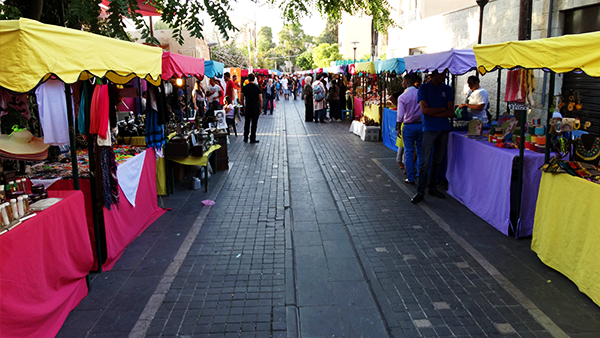
souq jara
This summer street market in Jabal Amman is open on Fridays and includes stalls selling local wares, pop-up cafes, street food and live performances from local bands and musicians. If you’re in Amman during the summer, you can’t miss out on this family friendly activity!
nymphaeum
Built in 191 AD, it was once a large two-story complex with fountains, mosaics, stone carvings and possibly a 600 square meter swimming pool.
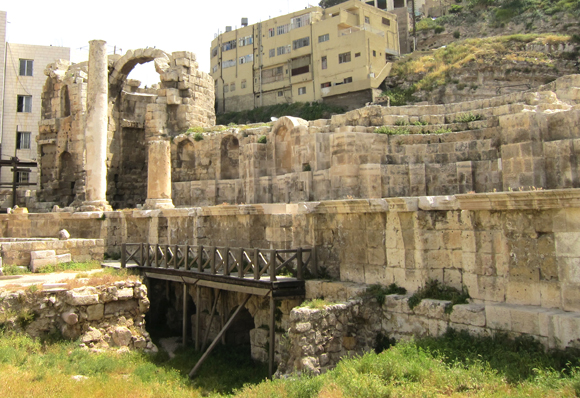
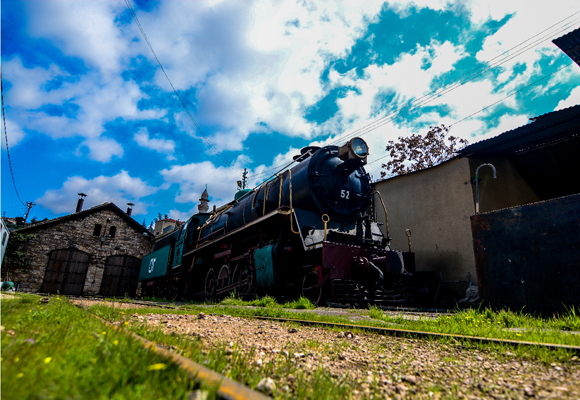
hijaz railway station
View the great collection of working steam locomotives, formerly used for as part of a pilgrimage route connecting the Ottoman Empire to Saudi Arabia and an intrinsic part of the Great Arab Revolt in 1918. For more of an in-depth look at the history of the station make sure to visit the onsite museum.
royal film commission
The Royal Film Commission is a committee that aims to develop the local production industry by encouraging Jordanians to use film and audio-visual media to express their original ideas. The commission also provides opportunities for audiences and filmmakers to get together, watch independent films, and exchange ideas in addition to supporting local and international movie productions in the Kingdom.
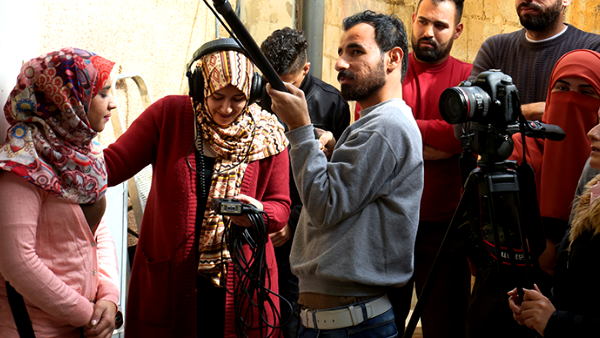
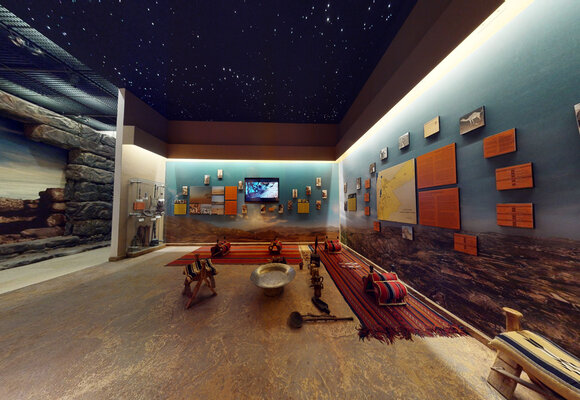
the jordan museum
The Jordan Museum is located in the dynamic new downtown area of Ras al-‘Ayn. Presenting the history and cultural heritage of Jordan in a series of beautifully designed galleries, The Jordan Museum serves as a comprehensive national center for learning and knowledge that reflects Jordan’s history and culture, and presents in an engaging yet educational way the Kingdom’s historic, antique and heritage property as part of the ongoing story of Jordan’s past, present, and future.
turquoise mountain
Turquoise Mountain celebrates and protects heritage in Jordan, Syria, and elsewhere, transforming lives and supporting communities with jobs, skills, and opportunities.
In Jordan, Turquoise Mountain works with talented master artisans from across the region to revitalise traditional craft and produce beautiful heritage objects.
Visit the showroom on Rainbow Street to discover their collections.
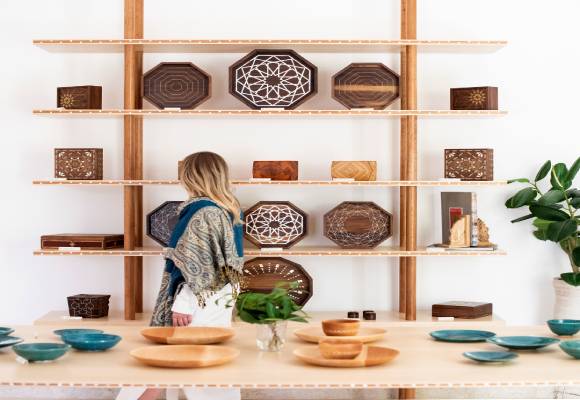
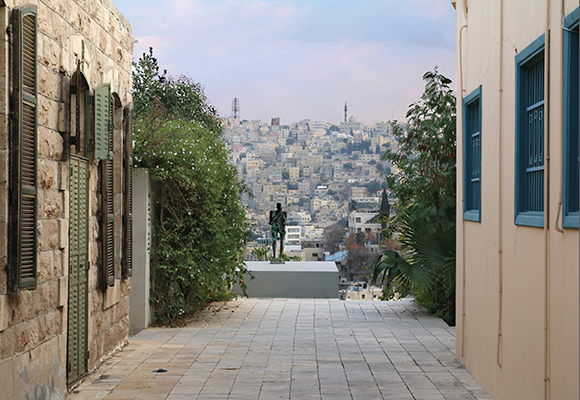
darat al-funun
Jordanian, Palestinian, Syrian and Lebanese families built the houses that form Darat al Funun. They are a living memory of the history of Jordan and the shared history of the Bilad al Sham. Darat al Funun today is an oasis for the arts overlooking the crowded downtown area of the old city of Amman. Along with visiting the Darat’s contemporary art exhibitions, many come to admire Amman’s traditional architecture, attend events in the archaeological site, read a book in their art library, or take a walk in the gardens.
nabad art gallery
A contemporary art gallery based in Amman, Jordan, Nabad has been exhibiting and providing artworks by emerging and established artists from Jordan since 2008. In addition to seeking to promote Jordanian art, Nabad also showcases a number of artists from the wider Arab world and beyond, with a view to cultivating intercultural dialogue among artists and with the public.
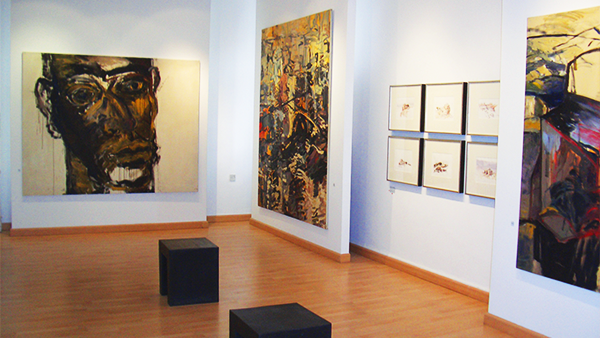

dar al-anda
Nestled at the cusp of ancient and contemporary history is a sanctuary of the senses that is Dar Al-Anda. The name is an authentically Arabic one. It best translates into “home of the giving“and therefore exemplifies what they stand for. Dar Al-Anda aims to enrich the lives of their patrons, employees and community by giving them the opportunity to experience art in all of its forms, thereby provoking thought and discourse.
king hussein bin talal mosque
The King Hussein Bin Talal Mosque, named after the late King, is the largest mosque in the Kingdom. Its architecture reflects the Umayyad style prevalent in several sites in Jordan.
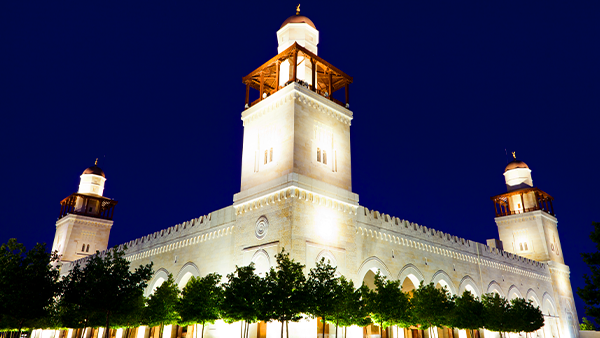
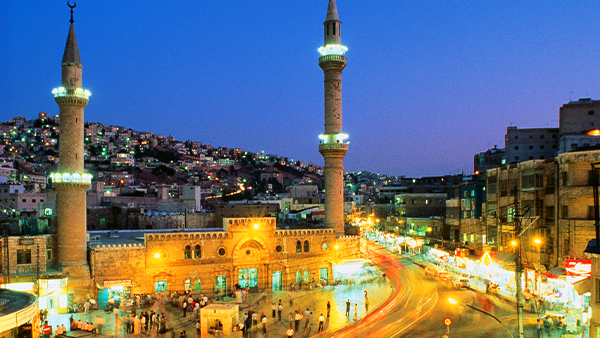
grand husseini mosque
The mosque was built by the late King Abdullah I in 1924 on the site of a much older mosque. It’s conveniently located downtown near the traditional souqs and street food vendors.
king abdullah i mosque
Built as a memorial by the Late King Hussein to his grandfather, the unmistakable blue-domed mosque can host up to 7000 worshippers inside and another 3000 in the courtyard area.
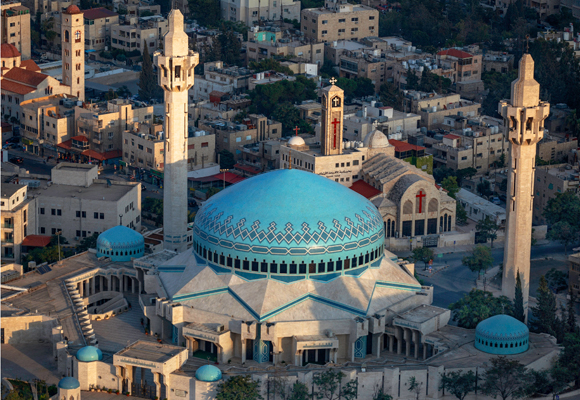

jobedu
Jobedu is a local creative brand that sells clothing and other merchandise produced by local and regional designers. The brand embodies the essence of Jordanian humor and culture. While the store first began by selling t-shirts they have expanded their products to include sweaters, hoodies, posters and so much more.
jordanian crafts center
The association aims to develop, improve and promote the ancient traditions of local handicrafts. The association is located at Jabal Al Lweibdeh near the Paris Square, where the local women offer a wide variety of their local handcrafts made around the kingdom.
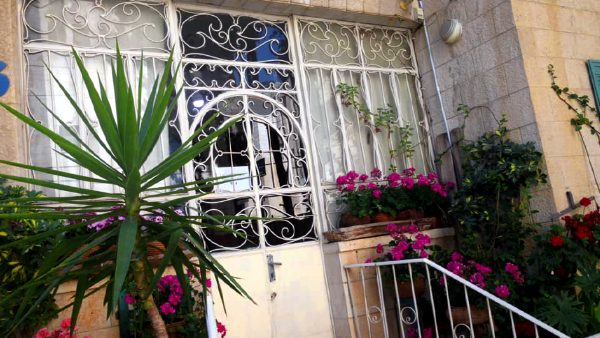
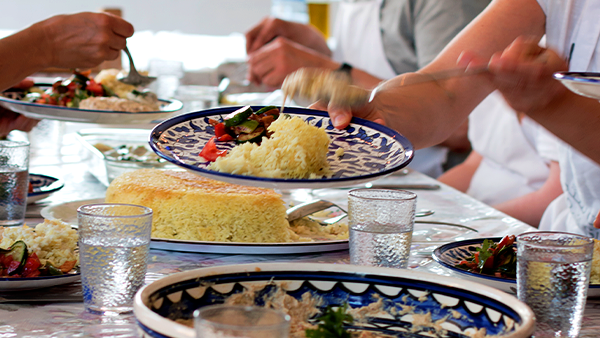
beit sitti
Beit Sitti offers a special cooking experience where tourists and locals can learn how to prepare a traditional Arabic meal side by side by attending unique training courses which can last for several hours. Once enrolled, you get to prepare one meal along with several appetizers and sweets which you can eventually share with other visitors.
national gallery of fine arts
The National Gallery of Fine Arts is one of the most important art museums in Jordan, because it is contains some of the most important art collections from 60 countries with a highlight on local and regional artists. The museum’s collection comprises of over a thousand pieces of art.
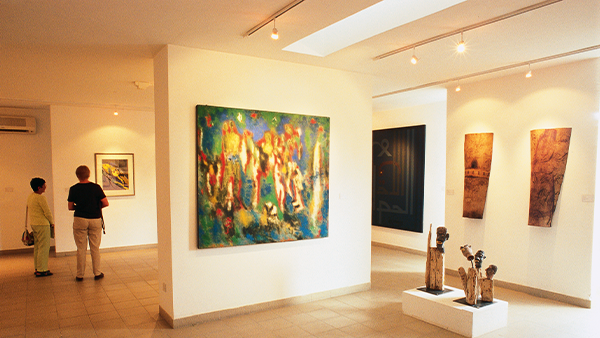
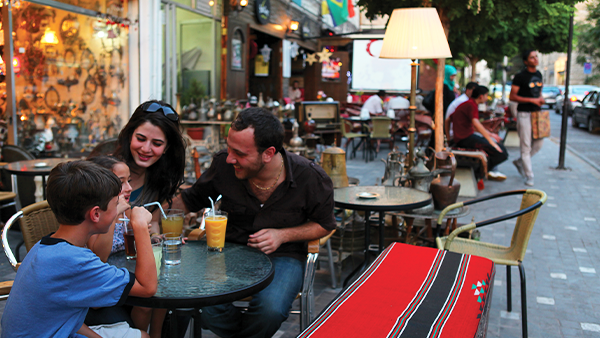
rainbow street
Rainbow Street is one of the oldest streets in Amman and has become a hub for local and international visitors. Lined with cafes, restaurants and a few art galleries sprinkled here and there the street is a must visit location in Amman for shopping, a night out or a simple meal.
jordan river foundation
Chaired by Her Majesty Queen Rania Al Abdullah, the Jordan River Foundation (JRF) is a non-profit, non-governmental organization established in 1995 with a focus on child safety and community empowerment. Driven by values of social justice, impactful interventions to alleviate poverty, and socio-economic empowerment – focusing on women and youth, JRF implements various programs to achieve its mission of transforming Jordanian communities. The JRF Showroom located on Rainbow Street showcases products sourced from community empowerment projects supported by the foundation.
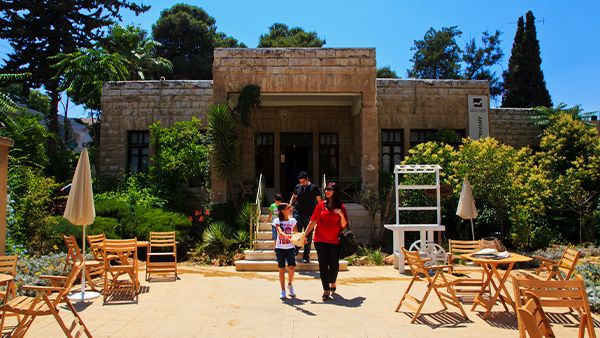
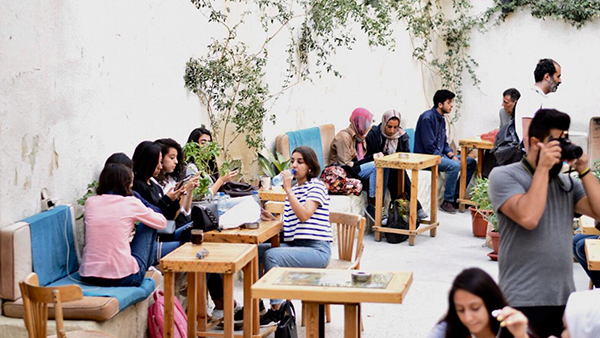
jadal
Jadal is located on Al-Kalha, one of the oldest staircases in Amman, in a house that dates back to 1933. It connects Downtown, the heart of Amman, and Jabal Al-Weibdeh, an area full of ambitious cultural projects and artistic initiatives. The project is a private non-profit initiative, providing an area in which cultural and intellectual activities are pursued in an attempt to create and share progressive societal concepts, cultures, and values.
hashem restaurant
Hashem Restaurant is one of the oldest restaurants in the country and is famous for its Hummus and Falafel. The restaurant has managed to maintain its standards for over forty years and there isn’t a single person in Amman who isn’t familiar with the location. Its downtown branch is usually full of visitors at any time of the day. The beauty of Hashem Restaurant is that locals and foreigners frequent this famous establishment.
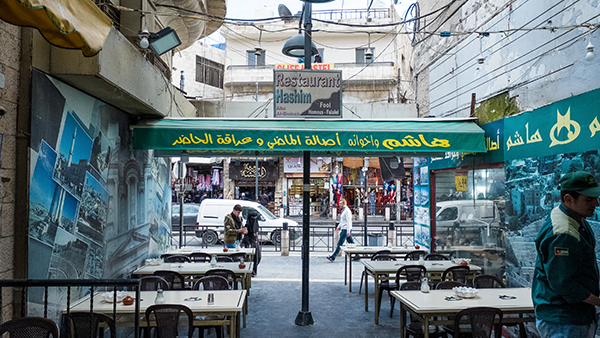
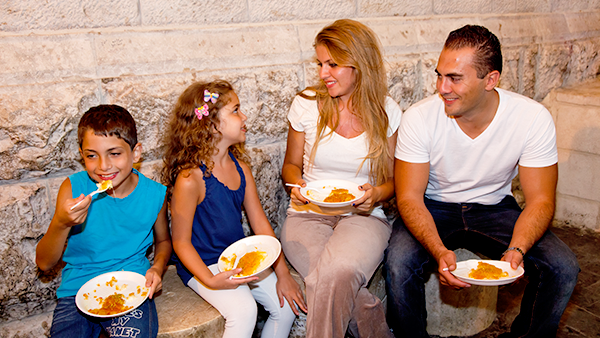
habiba sweets
Habiba is one the most famous places that serves Knafeh. It is considered a complimentary dessert to the hummus and falafel dishes at Hashem Restaurant nearby. The place is always packed full of people who stand in line waiting to get their share of the delicious ‘Nabulsi Kanafeh’. The dessert can be eaten in the courtyard near the restaurant or pre-ordered for large events and gatherings.
duke’s diwan
A unique look into the architectural heritage of Amman, this home has been converted by its owner to a public space for artists and musicians. While the home’s initial purpose served as Amman’s first post office in the 1930s, the building was then transformed into a hotel and then into the creative space that it is now. It is truly a an immersive experience bringing visitors back through Amman’s history.
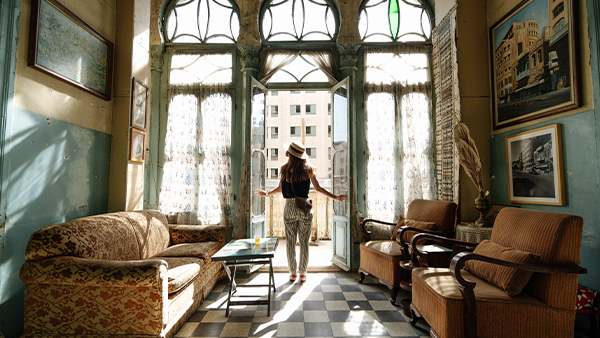
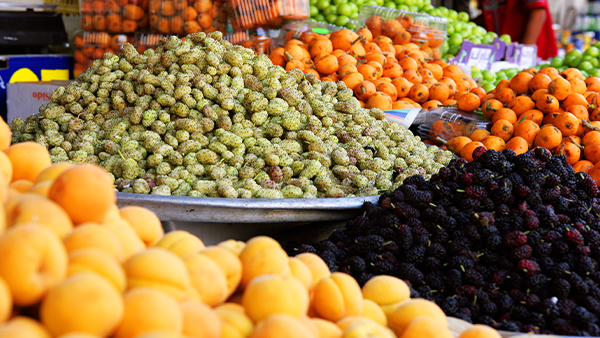
downtown markets – souq al-sukar
Walk through this beautiful and busy downtown fruit and vegetable market where locals shop for their fresh produce.
amman design week
Amman Design Week is an immersive experience in local and regional design and culture. Focused on creating a forum for learning, exchange and collaboration, this platform empowers designers through its comprehensive program of large-scale curated exhibitions, workshops, talks and events.
The 2019 edition of Amman Design Week will be held from the 4th until the 12th of October.
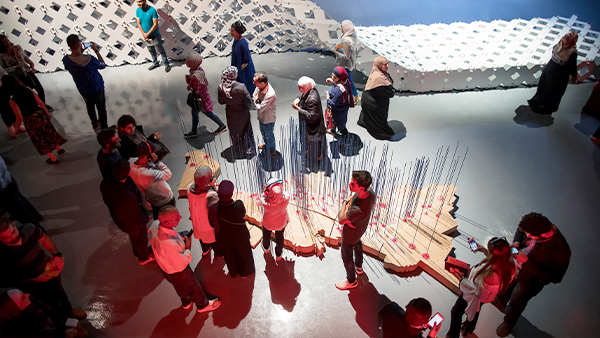
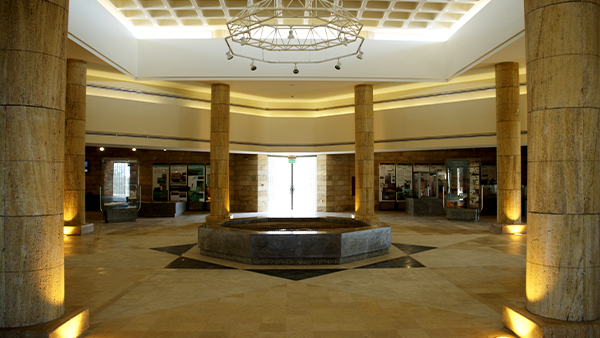
museum of parliamentary life
This museum is housed in the old parliament building in Jabal Amman. The displays in the museum illustrate The Hashemite Kingdom of Jordan’s political history in an amazing and engaging set-up.
royal automobile museum
The Royal Automobile Museum was founded in 2003 under the patronage of His Majesty King Abdullah II. The Royal Automobile Museum showcases an important part of Jordan’s political history from an interesting perspective. The exhibits also reflect the history of the Hashemite Kingdom of Jordan through cars from the reign of King Abdullah I to the reign of King Abdullah II. More recently, it has included many non-Jordanian vehicles and bikes, such as a 19th-century bike, a Bugatti and other rare vehicles. One of the most important items of the museum is the Lincoln Cabri convertible, 1952 model, which was used by late King Hussein Bin Talal during his studies in England, and also during his crowning ceremony in May 1953.
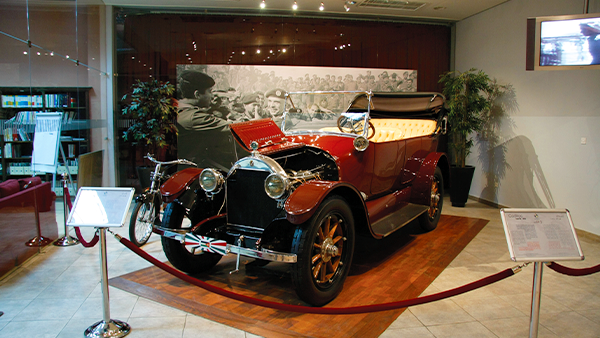

the children’s museum
The Children’s Museum is a non-profit educational institution launched by Her Majesty Queen Rania Al Abdallah in 2007. The Museum is spread over 8000 m2 of more than over 180 indoor and outdoor interactive exhibits and educational facilities, such as the Library, Art Studio, Tinker Lab and Secret Garden, along with year-round educational programs, events and shows. Since its opening, the Children’s Museum Jordan has received more than 2.5 million visitors.
the jordan archeological museum
Situated at the top of the Amman Citadel, the museum was built in 1951 to display the richness of archaeological sites from various artifacts discovered during excavations throughout Jordan. The museum was designed to rely on natural lighting (sunlight) through the windows on the top of the building and on electric lamps on the walls of the museum and above the cupboards so as not to shed light on the artifacts directly and damage them.
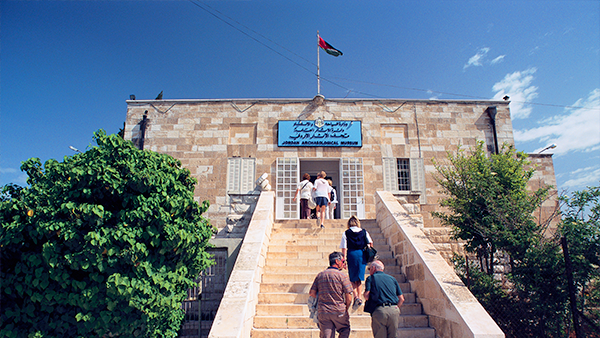
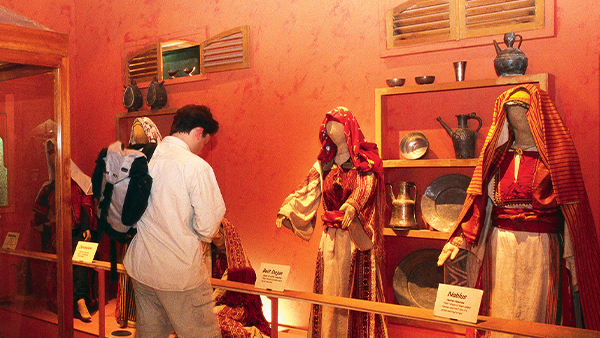
folklore museum
First opened way back in 1971, The Folklore Museum of Costume and Fashion was established in the eastern part of the Roman Theatre in Amman, with the aim of collecting Jordanian and Palestinian folklore from all parts of Jordan to protect and preserve for future generations. The museum also aims to showcase our popular heritage and present it to the whole world.
the roman theatre
The restored Roman Theatre, which dates back to the 2nd century AD is built into three sides of the hillside, it seats around 6000 people and is still used for performances today.
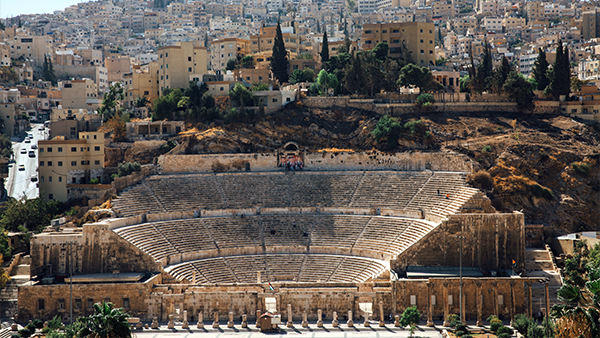
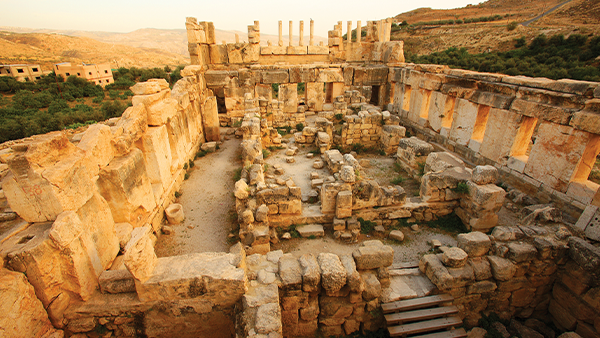
iraq al-amir
Located southwest of Amman, Iraq Al-Amir is famous for its olive trees and hillside caves that date back to the copper age. Also worth visiting while in the area is Qasr El-Abd on of the very few examples of pre-Roman architecture in Jordan, dated back to the 2nd century BC.
indoor rock climbing – climbat amman
If you are looking for an adrenaline rush and cannot make the trip outside Amman for some amazing rock-climbing you do not have to miss out! Try the region’s largest indoor climbing facility at Climbat Amman, where you can traverse climbing surface of over 1500 square meters along more than 6000 bolt-on climbing holds!
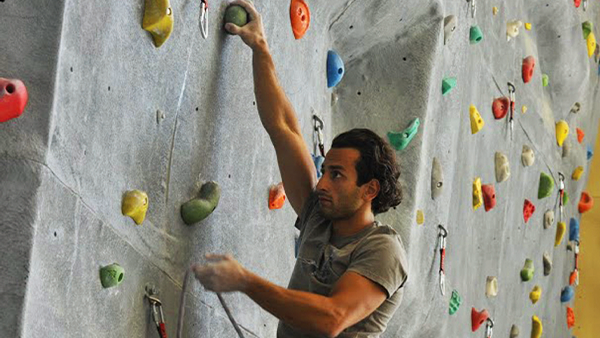
iraq al-amir women’s cooperative
Iraq Al-Amir was established by Noor Al-Hussein Foundation (NHF) in 1993. Rich in historical sites dating back to the hellenistic era, the region is also famous for its many springs which turned the valley into a green garden that has become an important tourist attraction. Iraq Al-Amir Women Cooperative Society has provided training projects for more than (150) women from all villages of Wadi Seer on various handicrafts and it is managed and run by women.
The Handicrafts Village which is considered a major part of the Society was established in 2001 for the purpose of conserving the region’s environment and preserving its unique architectural heritage. It also helps in developing craft-making skills to the local women and girls, and gives them a better chance of finding a job and contributing to their society.
Contact information/ how to book:
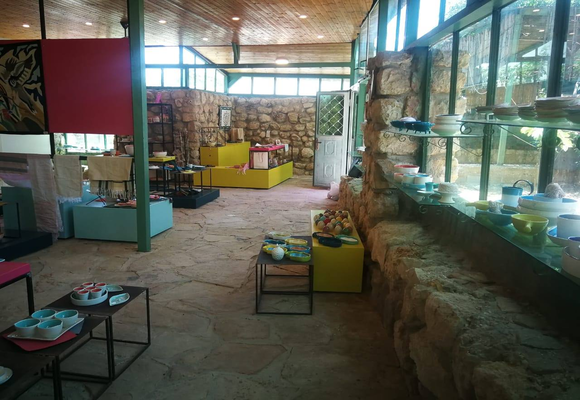

syrian jasmine house
Many women that came from Syria are widowed or had to leave their husbands behind. They arrived in Jordan as the sole breadwinners for their families. The Syrian Jasmine House employs 70 women – the majority of whom are Syrian but the group also includes Iraqi and Palestinian refugees. They have trained more than 1000 women in the art of handicrafts. The company received a donation to fund the trainings, however they do not depend on donations; they are a business at the end of the day.
alternative downtown amman tour
This tour highlights the differences between the western and less-visited eastern side of the city, the role of immigrants, and economic history that has contributed to the east-west divide. Observing street art, graffiti, and local markets will help us explore the economic realities of each area. We will learn about daily life in east Amman from its residents, including the local art of pigeon breeding and training.
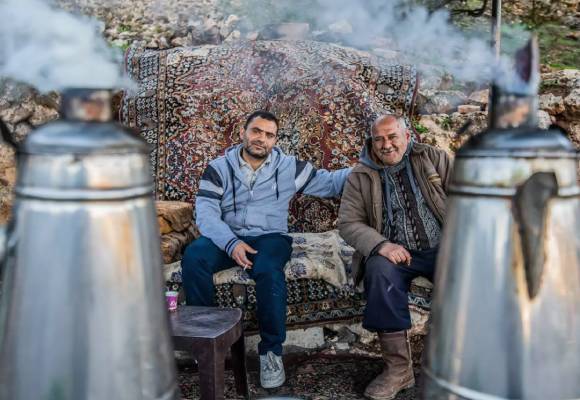
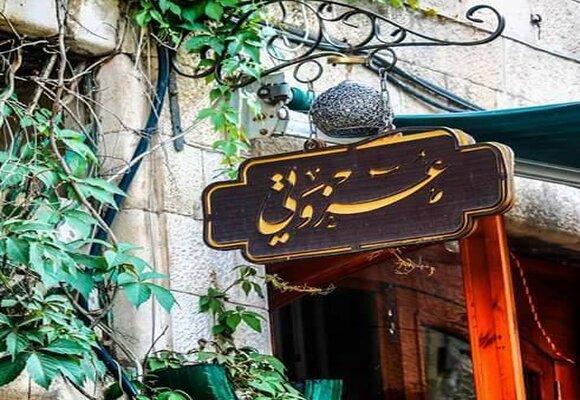
izzwety initiative
A volunteer-based restaurant that offers sandwiches and small plates on the basis that whoever buys a meal will automatically buy another for a person in need.
bookagri
A variety of agritourism activities around Jordan, empowering local communities and offering visitors unique activities authentically run by locals.
Contact information/ how to book:
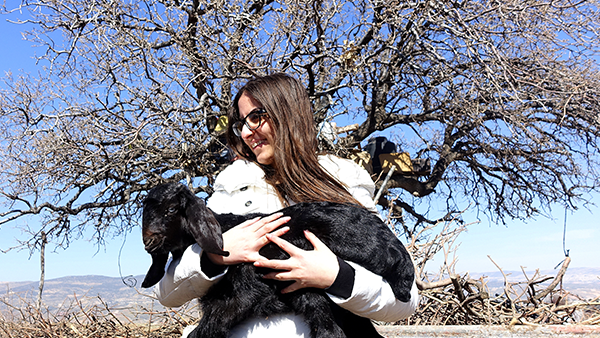

the royal society for the conservation of nature
The Royal Society for the Conservation of Nature is an independent national organization devoted to the conservation of Jordan's natural resources. RSCN was established in 1966 with His Majesty the late King Hussein as Honorary President. RSCN has the mission of protecting and managing the natural resources of Jordan, for it is responsible for protecting wildlife and wild places. Thus, it is one of the few national organizations in the Middle East with such a public service mandate. The RSCN has achieved international recognition and acclaim. Managing the nature resources of Jordan is done by setting up protected areas to safeguard the best wildlife and scenic areas as well as breeding endangered species to save them from extinction. In addition to enforcing governmental laws to protect wildlife, control illegal hunting and raise awareness in environmental issues through educational programs. Ultimately promoting the sustainable use of natural resources.
grocery shopping and cooking class in downtown amman
Enjoy the vibes of the Ammani local market, pick fresh ingredients (vegetables, spices, etc.,) and enjoy the social club and eatery space, Jameeda Khanum, in downtown Amman for an authentic cooking experience.
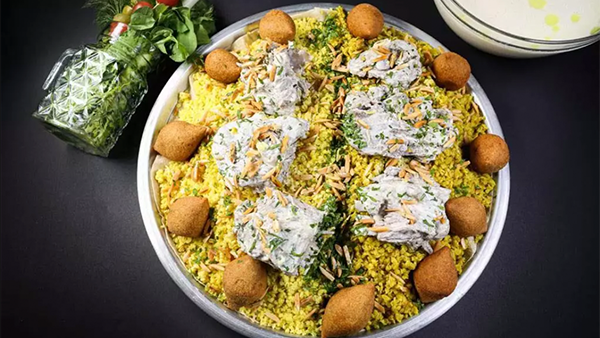
ajloun to iraq al-ameer
Ajloun to Iraq Al-Ameer
This section weaves through farmland and a spattering of rural villages as you leave Ajloun and its hilltop castle behind. The trail crosses the King Talal Dam, before ascending a hilltop following rich farmlands to the village of Rmeimeen with its beautiful church spire and minaret. Winding down through fertile valleys, the trail reaches the town of Fuhais and continues to Iraq Al-Ameer.
Total Length: 74.3 KM
Days: 5 Hiking days
Main sites in the region:
– Khirbet Sarabis and Springs
– King Talal Dam
– Rmeimeen village
– Town of Fuhais
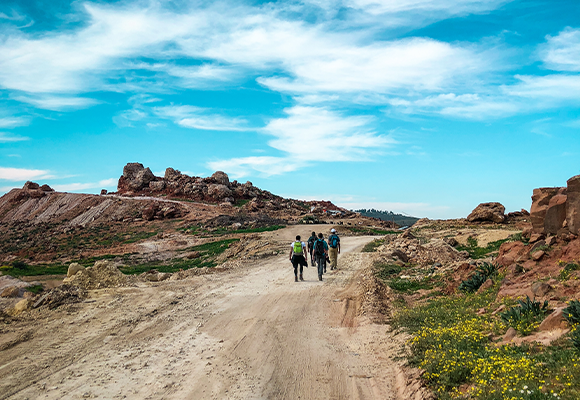
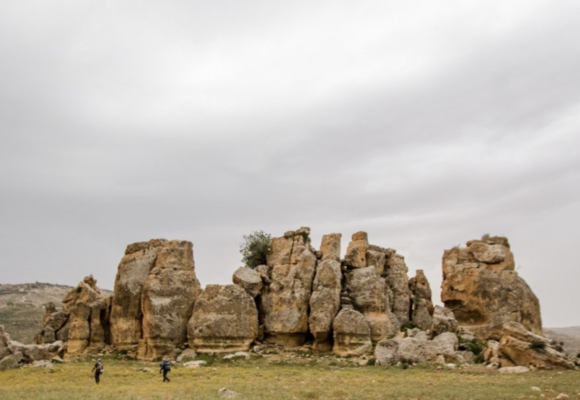
iraq al-ameer to wadi zarqa ma’in
Iraq Al-Ameer to Wadi Zarqa Ma’in
Here you leave the more northern regions and Amman behind and head towards the Dead Sea. Walk past the ancient palace of Iraq Al-Ameer before descending along the spectacular King Hussein’s Rally Road to the Jordan Valley. The climate and scenery changes as the Dead Sea looms from a plateau and Bedouin camps scatter the path. The trail now follows a roman road, encountering basalt cliffs and Wadi Zarqa Ma’in with its year-round stream.
Total Length: 58.8 KM Days: 3 Hiking days
Main sites in the region:
– Fuhais
– Iraq Al-Ameer, Qaser Al Abed and Burial Caves
– Iraq Al-Ameer Women’s Cooperative
– Mount Nebo
– Roman Road
– The Dead Sea canyons of Wadi Zarqa Ma’in and Wadi Wala
